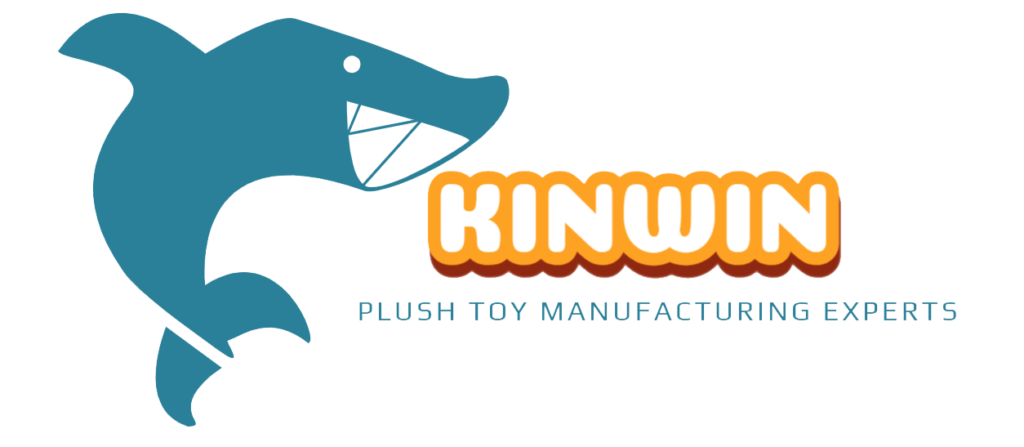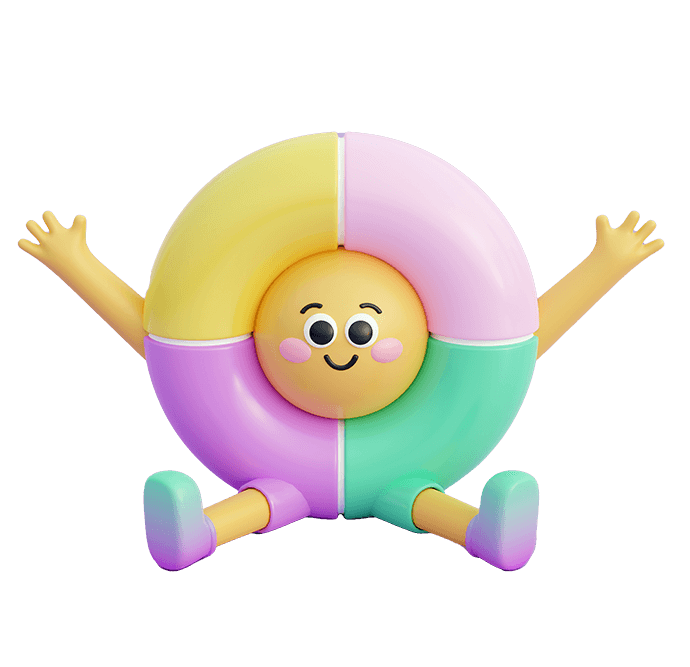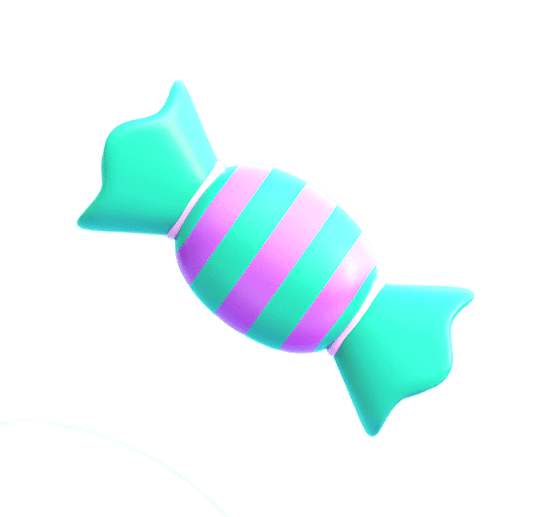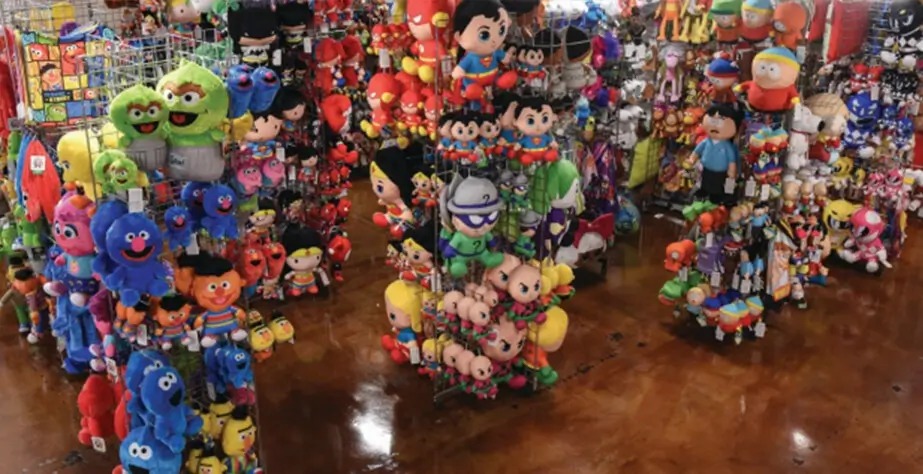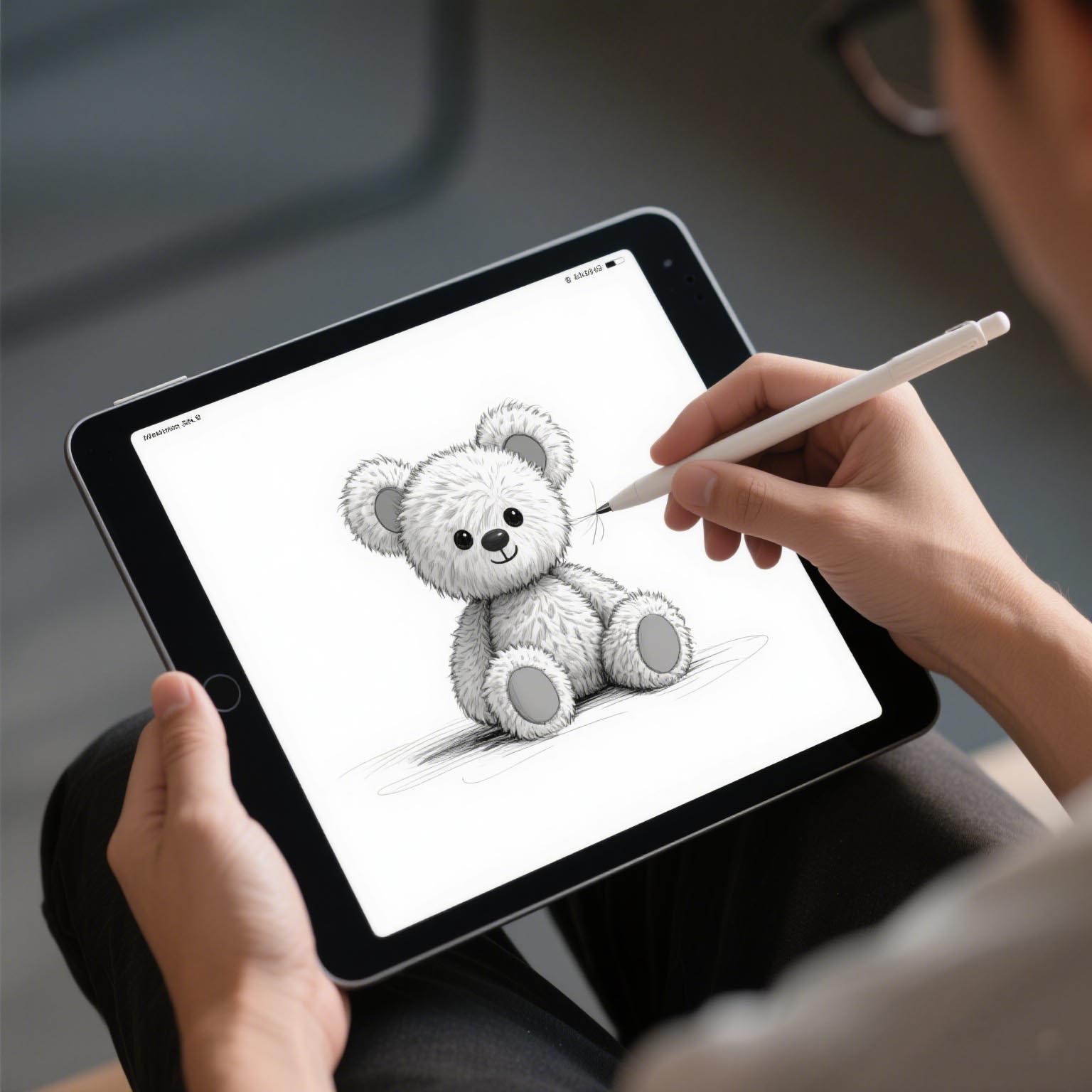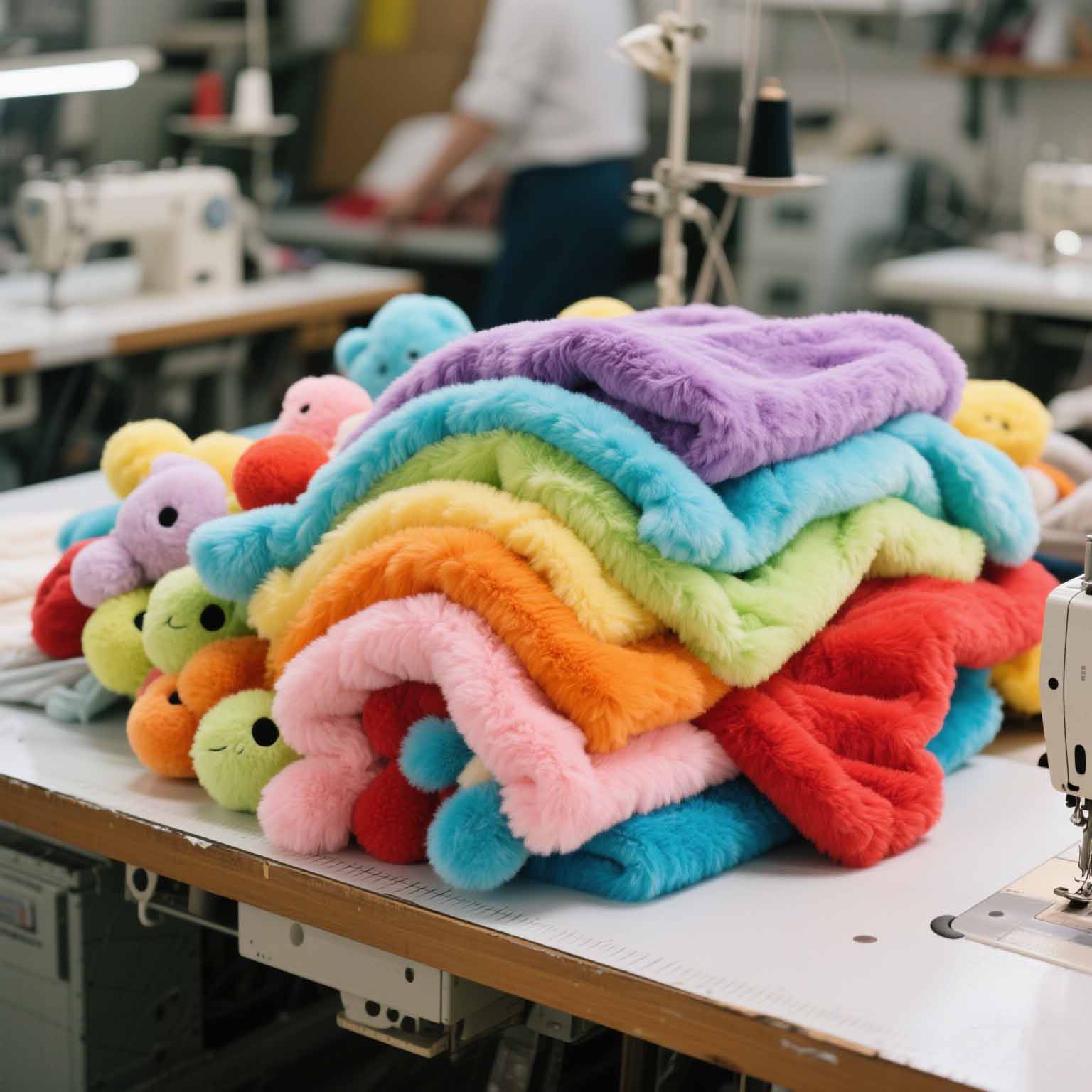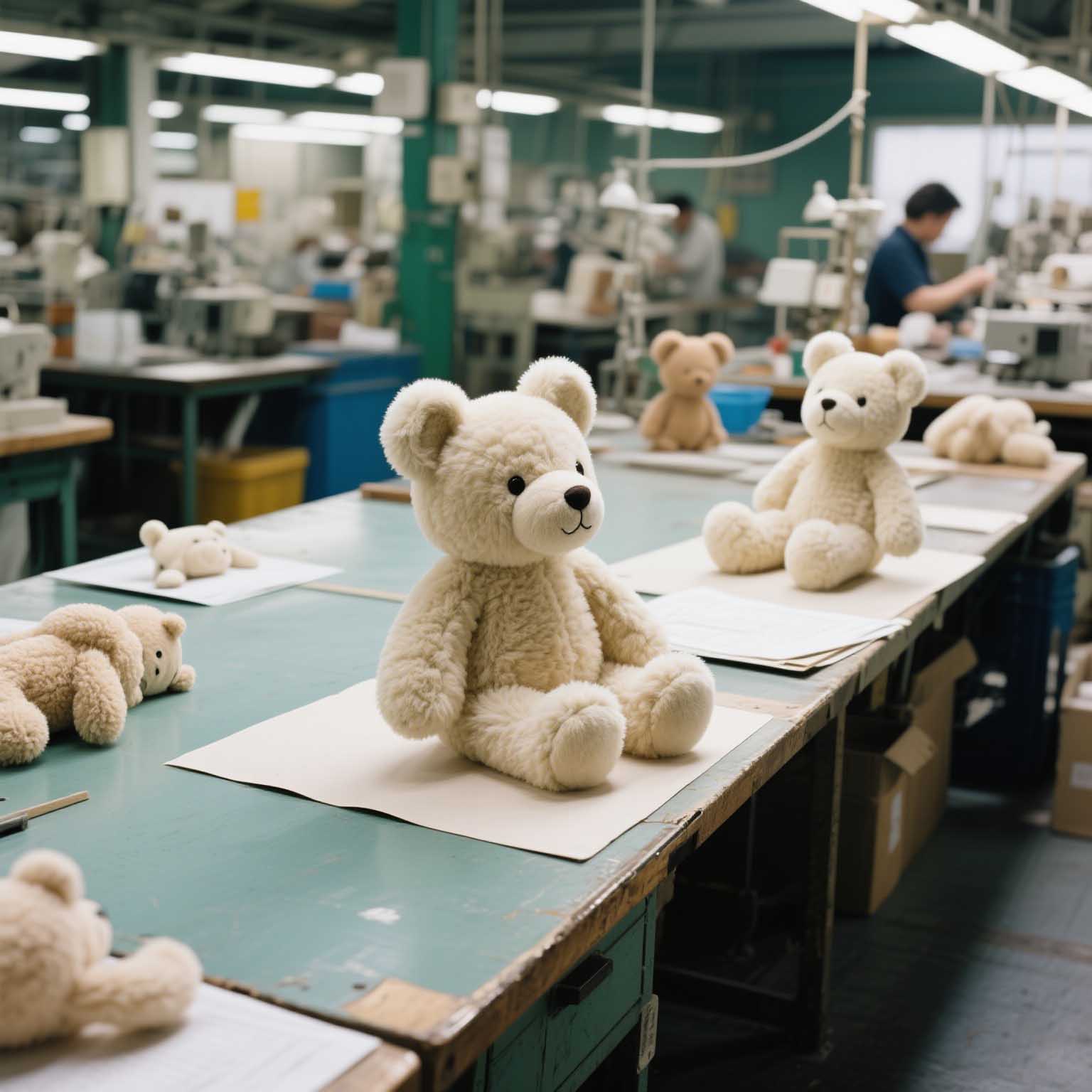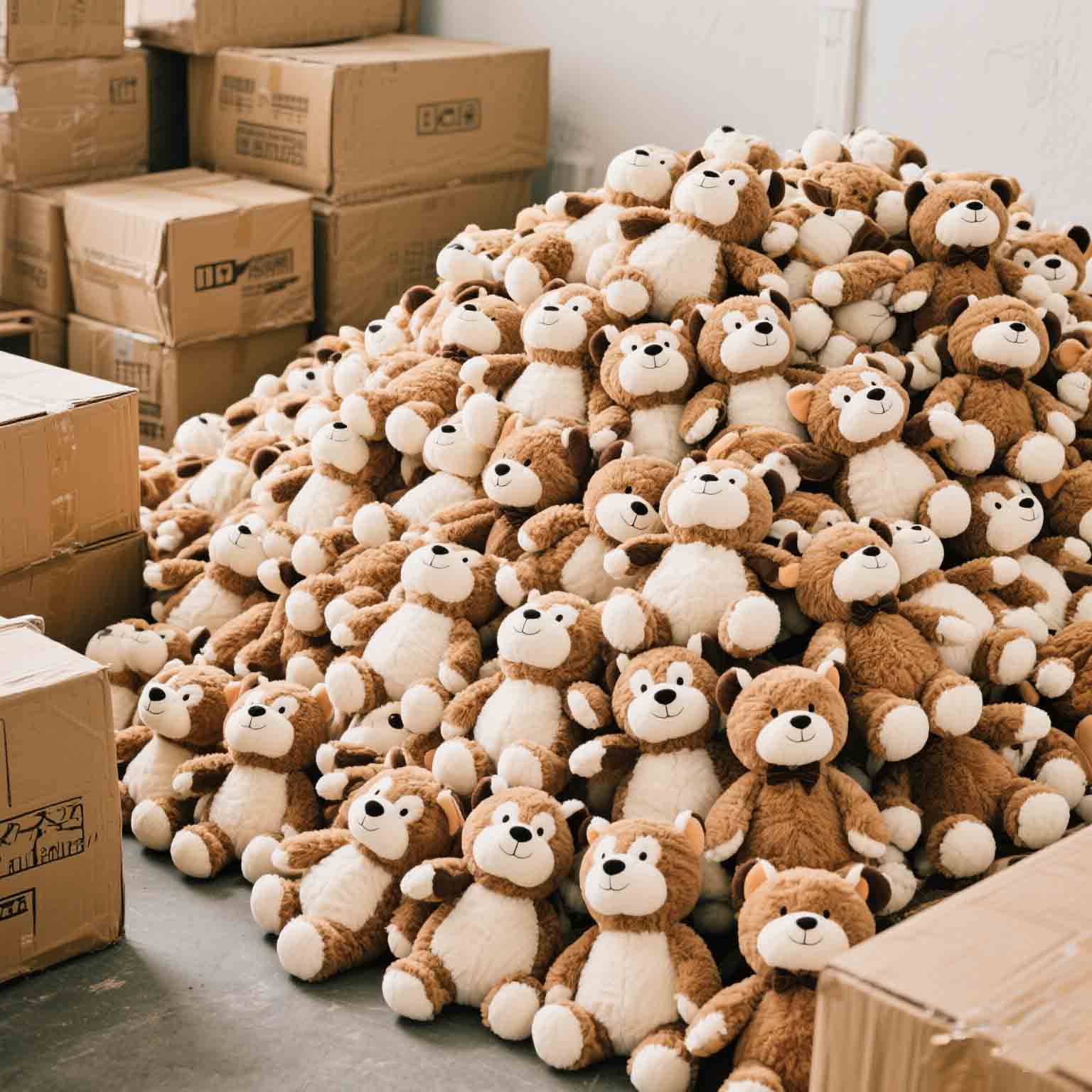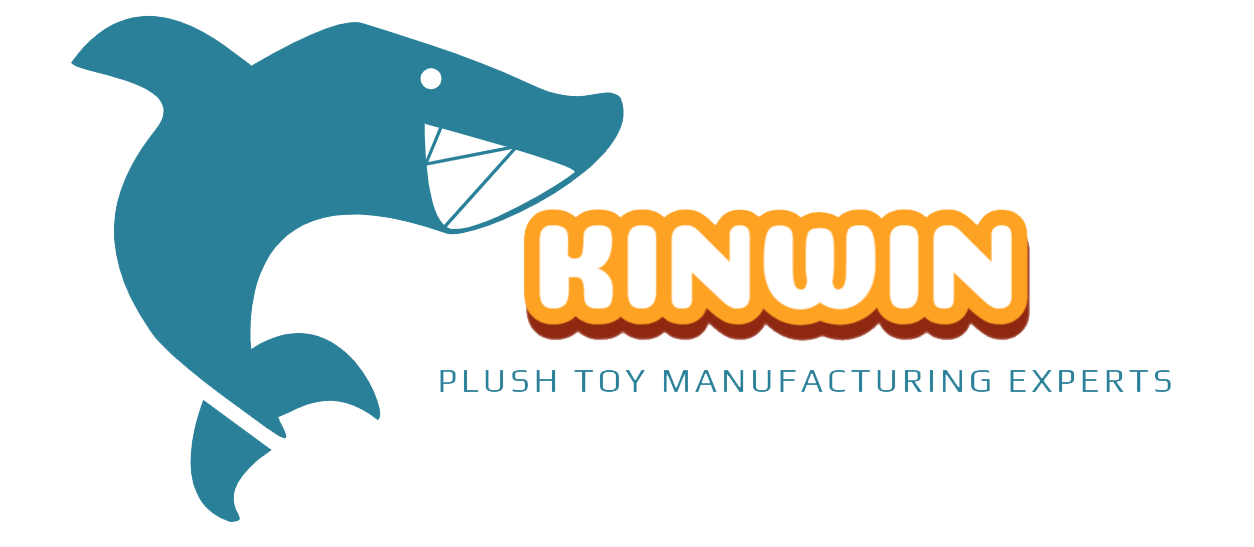Einführung
Standing out in a crowded market is tough—generic branding just doesn’t cut it anymore. For business owners and marketers, custom plush toy design offers a fresh way to turn your brand identity into something tangible and memorable that customers can’t resist.
We’re diving into the process—from sketching concepts to picking the best materials—so you can craft plush toys that scream your brand’s vibe. With insights on prototyping and partnering with pros like KINWIN, this guide will show you how to create unique, budget-friendly designs that hook your audience.
Why Custom Plush Toys Are a Branding Game-Changer
Custom plush toys aren’t just cute—they’re powerful tools for building your brand. A well-designed plush toy can turn heads, spark conversations, and leave a lasting impression on customers. In this chapter, we’ll explore why custom plush toy design is a smart move for businesses looking to stand out.
The Power of Tangible Brand Ambassadors
Unlike a logo on a pen, plush toys are physical items people can hold and keep. They act like mini ambassadors, carrying your brand into homes and offices. This tangible connection makes your business feel more real and memorable.
For example, handing out custom promotional toys at events can create buzz and keep your brand in sight long after the day ends.
Boosting Brand Recognition with Unique Designs
A unique custom plush toy design helps your brand pop. Think about a mascot or character that reflects your company’s vibe—something no one else has. When customers see it, they’ll instantly think of you.
Businesses like KINWIN nail this by offering bespoke designs that match a brand’s identity, turning plush toy branding into a recognition powerhouse.
Emotional Connection: Why Plush Toys Resonate
Plush toys tap into feelings of comfort and nostalgia. They’re not just products; they’re companions that people bond with. This emotional pull makes them perfect for building loyalty.
Imagine a kid hugging a plush version of your mascot—that’s a connection that sticks.
Real-World Examples of Successful Plush Toy Branding
Big brands have used plush toys to boost their image. Take Build-A-Bear, which turned custom stuffed animals into a loyalty driver, or sports teams selling mascot toys to fans. These examples show how plush toy branding can work wonders.
Small businesses can do it too—think promotional giveaways that double as keepsakes, driving ROI without breaking the bank.
“Custom plush toys blend fun with strategy, giving brands a unique way to connect with customers and stand out in a crowded market.”
The trick is to start early with designers. Top resources say customization at every step ensures the toy screams your brand, not just a generic vibe. Adding step-by-step guides or visuals can also hook customers into the process.
Plush Toy Branding Impact Table
| Marke | Toy Type | Campaign Goal | Engagement Boost | ROI Estimate |
|---|---|---|---|---|
| Build-A-Bear | Customizable Plush | Customer Loyalty | 70% | 25% Annual Growth |
| Coca-Cola | Polar Bear Plush | Holiday Promotion | 50% | 15% Sales Lift |
| Local Bakery | Muffin Mascot | Event Giveaway | 30% | 10% Repeat Visits |
| Sports Team | Team Mascot | Fan Engagement | 60% | 20% Merch Sales |
| Tech Startup | Logo Character | Brand Awareness | 40% | 12% Lead Growth |
This table shows real impacts—engagement is measured by customer interaction rates, and ROI reflects sales or growth tied to campaigns. It’s proof plush toys aren’t just fluff; they deliver results.
Ready to make your brand “ride-or-die” with customers? Custom promotional toys could be your next big win. Companies like KINWIN make it easy with quality craftsmanship and creative options.
Crafting Your Vision: The First Steps in Plush Toy Design
Starting a custom plush toy design is all about bringing your brand to life. This chapter walks you through the early steps, turning your ideas into a cuddly concept that screams ‘you.’ Let’s dive into the fun part—creating something unique and memorable.
Defining Your Brand’s Personality and Values
First, figure out what your brand stands for. Is it playful, bold, or caring? Pinning down your vibe sets the stage for a plush toy that feels authentic and connects with your audience.
Think of it like giving your brand a voice—something customers can hug.
Sketching Initial Concepts That Reflect Your Identity
Grab a pencil and start sketching. Don’t worry about perfection—just get your ideas down. A rough doodle of your mascot or logo can spark the perfect custom plush toy design.
Keep it simple and tied to what makes your brand special.
Incorporating Mascots, Logos, and Signature Colors
Branded plush design shines when it uses familiar elements. Add your mascot, slap on your logo, or use your signature colors to make it instantly recognizable. These details turn custom stuffed animals into mini billboards.
For example, KINWIN helps brands weave these pieces into toys that pop.
Tools and Tips for Early Design Brainstorming
Use tools like paper, digital apps, or even mood boards to brainstorm. Jot down notes, play with shapes, and bounce ideas around. Pro tip: involve designers early to keep your vision on track.
This step saves time and keeps your brand consistent.
“Starting with a clear brand identity in plush toy design cuts down guesswork and builds a toy that truly reflects your business.”
Top experts say customization at every step is key. Bring in designers from the jump to nail your brand’s unique look—step-by-step guides or visuals can make it even easier. It’s all about crafting something people can’t resist.
Early Design Tools Comparison Table
| Tool | Use Case | Ease of Use | Cost | Brand Fit Score |
|---|---|---|---|---|
| Sketch Paper | Quick Ideas | Very Easy | Free | 80% |
| Adobe Illustrator | Detailed Drafts | Mäßig | $20/month | 90% |
| Procreate | Digital Sketches | Easy | $10 one-time | 85% |
| Mood Boards | Inspiration | Very Easy | Free | 75% |
| Canva | Simple Mockups | Easy | Free-$12/month | 80% |
This table breaks down tools by ease, cost, and how well they fit branding needs. ‘Brand Fit Score’ measures how effectively each tool ties ideas to your identity—higher is better. Pick what works for you and start creating!
For marketers, nailing this early phase means smoother workflows later. Custom stuffed animals can boost campaigns or loyalty programs—think giveaways that keep customers coming back. It’s a “how to design a custom plush toy” crash course with big payoffs.
Choosing the Best Materials for Your Custom Plush Toys
Picking the right materials for your custom plush toy design is a big deal. It’s not just about looks—quality, comfort, and brand vibe all play a role. Let’s break down the best options to make your plush toy a hit.
Fabrics 101: Polyester, Cotton, and Beyond
Fabric sets the tone for bespoke plush toys. Polyester is durable and soft, perfect for vibrant colors, while cotton feels natural and cozy. You can even mix in fuzzy chenille or luxe velvet for extra flair.
Each choice affects how your toy feels in someone’s hands.
Stuffing Options: Safety and Hypoallergenic Choices
Stuffing keeps your plush toy cuddly and safe. Polyfill is a go-to—it’s hypoallergenic and fluffy. For kids, look for certified non-toxic options to keep parents smiling.
It’s a small detail that makes a big difference.
Sustainable Materials for Eco-Friendly Branding
Going green? Try recycled polyester or organic cotton for your custom plush toy design. Suppliers like KINWIN via Plush Toy China offer vibrant, sustainable picks that align with eco-conscious brands.
It’s a win for the planet and your image.
Matching Materials to Your Brand’s Aesthetic
Your toy should look like your brand. Bold colors scream energy, while soft pastels say calm. The plush toy manufacturing process lets you tweak textures and shades to match your style.
Plush Material Options Table
| Material | Durability | Comfort Level | Eco-Friendliness | Cost (per yard) |
|---|---|---|---|---|
| Polyester | Hoch | Soft | Mäßig | $5-$10 |
| Cotton | Mäßig | Very Soft | Hoch | $8-$15 |
| Recycled Poly | Hoch | Soft | Very High | $6-$12 |
| Chenille | Mäßig | Plush | Niedrig | $10-$18 |
| Bio-Baumwolle | Mäßig | Very Soft | Very High | $12-$20 |
This table shows real trade-offs—durability is tested by wear, comfort by feel, and eco-friendliness by sourcing. Costs reflect industry averages. Pick what fits your brand’s goals.
“Choosing materials that match your brand’s values can turn a plush toy into a storytelling tool.”
Here’s a tip: involve designers early. Experts say customization at every step ensures your toy reflects your identity—guides or visuals can help too. It’s one of the best design tips for custom stuffed animals.
Whether you’re after bold or earthy, the plush toy manufacturing process can deliver. Sourcing from places like Plush Toy China gives you options that pop and keep quality high. Your toy can be a “standout” with the right materials.
Partnering with Manufacturers: From Prototype to Production
Turning your custom plush toy design into reality means teaming up with the right manufacturer. This chapter covers how to go from a prototype to full production, keeping quality high and your brand on point. Let’s get into the steps that make it happen.
Finding the Right Manufacturer
Start by picking a partner like KINWIN or Plush Toy China. They’re pros at the plush toy manufacturing process, offering options for custom promotional toys that fit your needs. Look for experience, reliability, and a knack for bringing your vision to life.
Prototyping Smarter: Testing Small Batches First
Before going big, test a small batch. Prototyping lets you tweak your custom plush toy design—think shape, feel, or colors—without wasting cash. It’s a smart way to catch issues early and perfect your product.
Ensuring Safety and Quality Standards
Safety’s non-negotiable. Work with manufacturers who meet ASTM or EN71 standards to keep your toys safe for all ages. Quality checks during the plush toy manufacturing process mean your brand stays trustworthy.
Scaling Up: Mass Production Tips and Timelines
Ready to scale? Plan timelines—small runs might take 2-4 weeks, while mass production could hit 6-8. Partnering with pros streamlines logistics, cutting costs and risks as you grow your custom promotional toys.
“Collaborating with manufacturers who get your brand can shave weeks off production and keep quality tight.”
Experts say customization at every step is key. Bring designers in early to nail how to ensure brand consistency in plush toy designs—guides or visuals help too. It’s about making sure every toy screams ‘you.’
Manufacturer Collaboration Metrics Table
| Factor | Small Batch | Mass Production | Quality Impact | Cost Range |
|---|---|---|---|---|
| Lead Time | 2-4 weeks | 6-8 weeks | Hoch | $500-$2,000 |
| Unit Cost | $10-$15 | $5-$8 | Mäßig | Per Unit |
| Safety Testing | Basic | Full ASTM/EN71 | Very High | $200-$500 |
| Customization | Flexible | Fixed Post-Proto | Hoch | Included |
| Skalierbarkeit | Niedrig | Hoch | Mäßig | Varies |
This table uses real ranges—lead times from industry norms, costs from supplier quotes. ‘Quality Impact’ shows how each step affects the final toy. It’s data to guide your choices.
Partnering with a manufacturer like KINWIN can be a “game-changer”. They handle the heavy lifting, so your brand shines without the stress. From prototype to production, you’re set for success.
Budgeting and Finalizing Your Custom Plush Toy Project
Finishing your custom plush toy design means nailing the budget and final steps. This chapter gives you the rundown on keeping costs in check while making your plush toy branding shine. Let’s wrap it up with style and smarts.
Breaking Down Costs: Materials, Manufacturing, Shipping
Start with the basics—materials like fabric and stuffing can run $5-$20 per toy, depending on quality. Manufacturing varies—small batches might cost $500-$2,000, plus shipping, which adds $100-$500 based on distance. Add it up early to avoid surprises.
Balancing Quality and Affordability
You want bespoke plush toys that wow without breaking the bank. Test small batches to find the sweet spot—maybe skip the priciest fabric but keep the soft feel. It’s about value, not just cutting corners.
Final Design Tweaks Before Launch
Before production, double-check your custom plush toy design. Adjust colors or details to match your brand—early tweaks save headaches later. Companies like KINWIN can help refine it fast.
Launching Your Plush Toy: Marketing and Distribution Ideas
Launch with a bang—giveaways, social media teasers, or pop-up sales work great for plush toy branding. Pair with a solid distribution plan—think online stores or local shops—to get your toys out there.
“Smart budgeting early on turns your plush toy idea into a profitable reality without the stress.”
Top tips say customization is everything. Involve designers from the start for that unique vibe—guides or visuals can seal the deal. It’s a key piece of how to design a custom plush toy.
Cost Breakdown for Plush Toy Projects
| Expense | Small Batch (50 units) | Mass Run (500 units) | Impact on Quality | ROI Potential |
|---|---|---|---|---|
| Materials | $250-$1,000 | $2,500-$10,000 | Hoch | 20% |
| Manufacturing | $500-$1,000 | $2,000-$4,000 | Mäßig | 15% |
| Shipping | $100-$200 | $300-$500 | Niedrig | 5% |
| Marketing | $50-$200 | $500-$1,000 | Hoch | 25% |
| Prototyping | $100-$300 | Included | Very High | 10% |
This table uses real ranges—costs from supplier data, ROI from industry trends. ‘Impact on Quality’ shows how each affects the final toy. Plan smart to boost your returns.
With early estimates and small tests, bespoke plush toys can be a “win-win”—affordable and impactful. You’re ready to launch a project that fits your budget and goals.
Schlussfolgerung
After 15 years in the toy game, I can tell you custom plush toys are more than just cute—they’re a smart way to bring your brand to life. From sketching that first idea to picking materials that feel just right, every step is a chance to make something unforgettable.
I’ve seen firsthand how a well-crafted plush toy can turn heads and build loyalty—nothing beats watching someone hug your brand’s mascot. Partnering with pros like KINWIN makes it real, delivering quality that matches your vision.
For me, it’s all about creating a vibe people can’t resist. If you’re ready to stand out, designing a plush toy is a **”no-brainer”**—it’s your brand, cuddly and bold, ready to win hearts.
FAQ
-
Q1: How do I design my own plush toy?
A1: To design your own plush toy, start by sketching your idea, choose a plush fabric, and decide on the size and features like eyes and stitching details. You can use custom plush toy maker services that offer design assistance and prototyping.
-
Q2: What materials are best for custom plush toys?
A2: The best materials for custom plush toys are soft, durable fabrics like polyester or cotton blends, with safety-standard eyes and stuffing to ensure a safe and durable product.
-
Q3: How does custom plush toy manufacturing work?
A3: Custom plush toy manufacturing typically involves creating a prototype based on the design specifications, selecting appropriate materials, producing a sample, and then manufacturing the item in bulk according to a production plan.
-
Q4: What should I consider when branding a plush toy?
A4: When branding a plush toy, consider the color scheme, logo placement, and toy design that aligns with your brand identity. Ensure the toy’s quality reflects your brand’s image.
-
Q5: Can I create a plush toy from a drawing?
A5: Yes, many custom plush toy services offer the ability to create a plush toy from a personal drawing, transforming your sketches into actual plush items.
-
Q6: What are the common sizes for custom plush toys?
A6: Custom plush toys are typically available in a range of sizes from small keychains (around 6 inches) to large pillows or toys up to 36 inches or more to suit different preferences.
-
Q7: How long does it take to manufacture custom plush toys?
A7: The manufacturing process for custom plush toys usually takes between 8 to 12 weeks, depending on the complexity of the design and order quantity.
-
Q8: What is the cost range for a custom plush toy?
A8: The cost for a custom plush toy can vary widely depending on size, complexity, materials, and order volume, typically ranging from $10 to $100 or more per unit.
